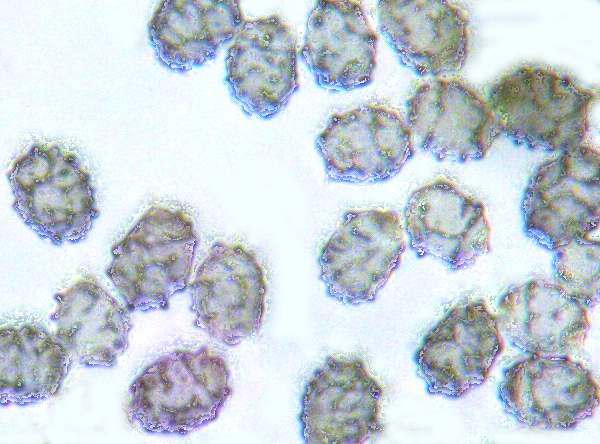Lactarius pubescens (Fr.) Fr. - Bearded Milkcap
Phylum: Basidiomycota - Class: Agaricomycetes - Order: Russulales - Family: Russulaceae
Distribution - Taxonomic History - Etymology - Identification - Toxicity - Reference Sources
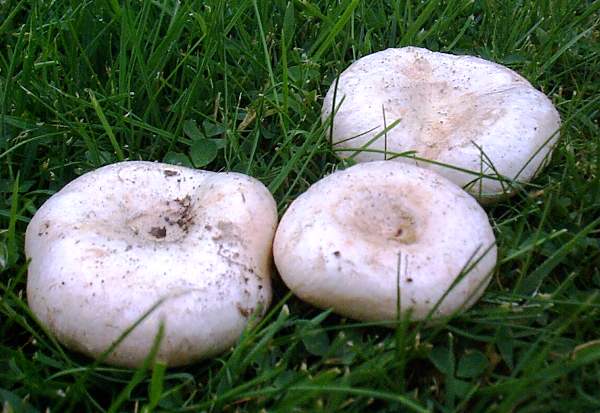
Lactarius pubescens is an uncommon but very attractive milkcap that grows, as so many of the larger milkcaps do, under birch trees. Its very pale colouring and woolly cap margin are useful distinguishing features.
Distribution
Uncommon but widespread in Britain and Ireland, the Bearded Milkcap is also found (mainly in damp grassland) throughout much of mainland Europe and in many parts of North America. Always associated with birch trees, this is a mushroom that is rarely seen, but where it does occur there are sometimes a dozen or more in a group. Those shown above were growing beneath a Silver Birch in our West Wales village garden; below are Bearded Milkcaps seen in central Scotland.
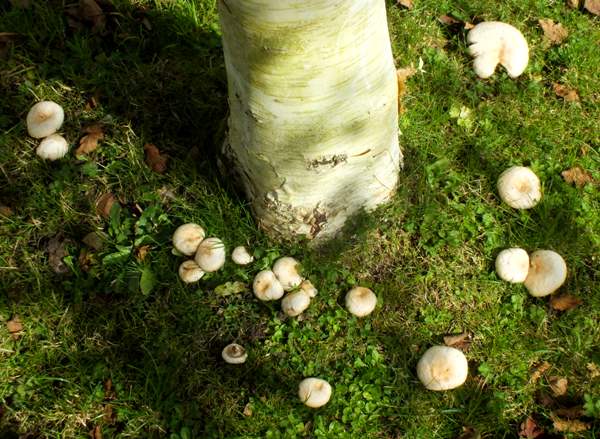
Always associated with birch trees, this is a mushroom that is rarely seen, but where it does occur there are sometimes a dozen or more in a group. Those shown at the top of this page were growing beneath a Silver Birch in a West Wales village garden; below are Bearded Milkcaps in central Scotland.
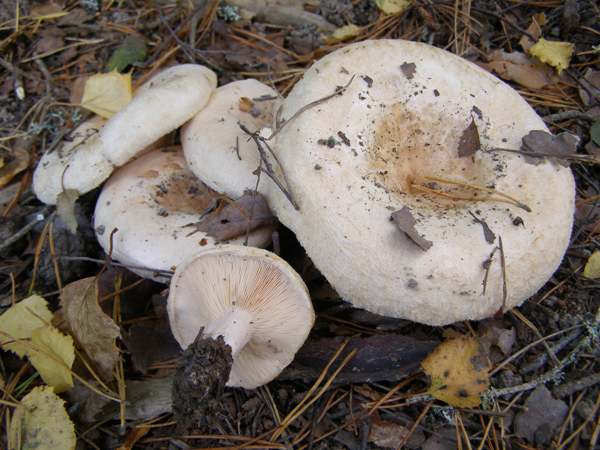
Taxonomic history
The Bearded Milkcap was described in 1815 by the great Swedish mycologist Elias Magnus Fries, who gave it the binomial scientific name Agaricus pubescens. (Most of the gilled mushrooms were included placed in the genus Agaricus, but the great majority of them have since been redistributed across several newer genera leaving just the 'true mushrooms' in a slimmed-down Agaricus genus.) It was also Fries who, in 1838, transferred this woodland mushroom species to its present genus, thereby establishing its name as Lactarius blennius, which is still its generally-accepted scientific name today.
Synonyms of Lactarius pubescens include Agaricus pubescens Fr., Lactarius controversus var. pubescens (Fr.) Gillet, Lactifluus pubescens (Fr.) Kuntze, Lactarius torminosus ssp. pubescens (Fr.) Konrad & Maubl., and Lactarius torminosus var. pubescens (Fr.) S.Lundell.
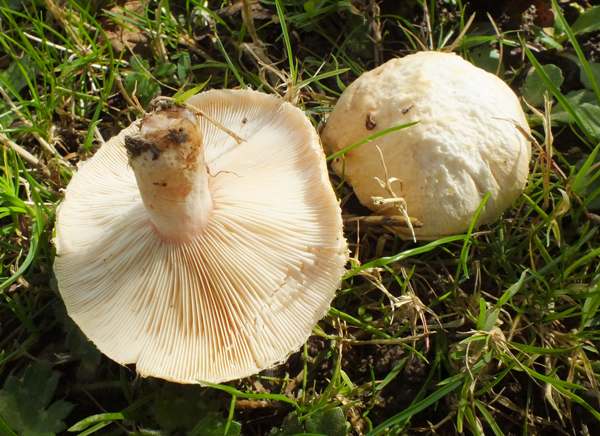
Toxicity
Although it is unlikely to cause death or long-term illness, this poisonous species, which looks like a smaller, pallid and rather badly sheared version of the equally toxic Woolly Milkcap Lactarius torminosus, should not be gathered to eat.
Etymology
The generic name Lactarius means producing milk (lactating) - a reference to the milky latex that is exuded from the gills of milkcap fungi when they are cut or torn. The specific epithet pubescens comes from Latin and refers to the fine downy hairs that fringe the caps of these mushrooms.
Identification guide
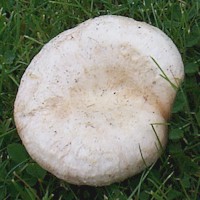 |
Cap5 to 15cm in diameter, convex and then slightly depressed, the buff and pale pink caps are woolly, particularly at the inrolled margins, and usually have faint pinkish concentric bands and a pinkish-brown zone towards the centre. Beneath the woolly cuticle, the thick cap flesh is white and brittle. |
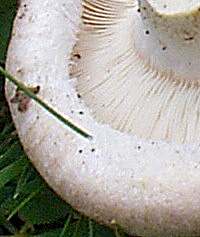 |
GillsThe shortly decurrent, crowded white gills are faintly tinged salmon pink; they exude a white unchanging latex when damaged. Note: Lactarius pubescens var. betulae occurs under ornamental birches in North America; its latex is initially white but eventually stains the gills yellow. Stem10 to 23mm in diameter and 3 to 6cm tall, the stem usually tapers in slightly towards the base. |
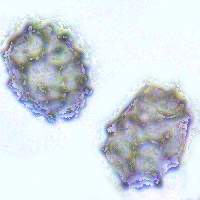 |
SporesEllipsoidal, 6.5-8 x 5.5-6.5µm; ornamented with small amyloid warts and low amyloid ridges with a few cross connections making an incomplete irregular network. Spore printPale ivory, sometimes with a faint salmon-pink tinge. |
Odour/taste |
Slight odour of turpentine (some say of Pelargonium); hot acrid taste. |
Habitat & Ecological role |
Ectomycorrhizal; found under birch trees on lawns, in parks and on heathland. Unusually for a mycorrhizal mushroom, this milkcap sometimes appears, usually in groups, beneath birches that are less than five years old. |
Season |
August to October in Britain and Ireland. |
Similar species |
Lactarius torminosus has a salmon pink woolly cap that is mover overtly zoned and has a very fibrous inrolled margin, and its spores are larger than those of Lactarius pubescens; it also grows under birch. |
Reference Sources
Fascinated by Fungi, 2nd Edition, Pat O'Reilly 2016, reprinted by Coch-y-bonddu Books in 2022.
Funga Nordica, Henning Knudsen and Jan Vesterholt, 2008.
Fungi of Switzerland, volume 6: Russulaceae, Kränzlin, F.
BMS List of English Names for Fungi.
Dictionary of the Fungi; Paul M. Kirk, Paul F. Cannon, David W. Minter and J. A. Stalpers; CABI, 2008
Taxonomic history and synonym information on these pages is drawn from many sources but in particular from the British Mycological Society's GB Checklist of Fungi.
Fascinated by Fungi. Back by popular demand, Pat O'Reilly's best-selling 450-page hardback book is available now. The latest second edition was republished with a sparkling new cover design in September 2022 by Coch-y-Bonddu Books. Full details and copies are available from the publisher's online bookshop...
